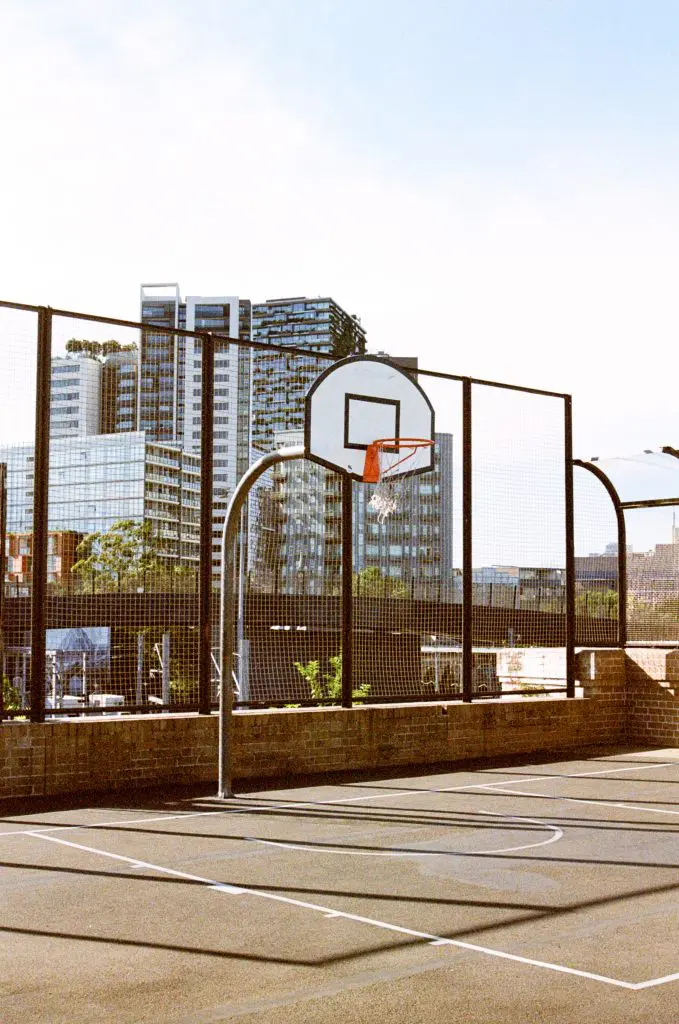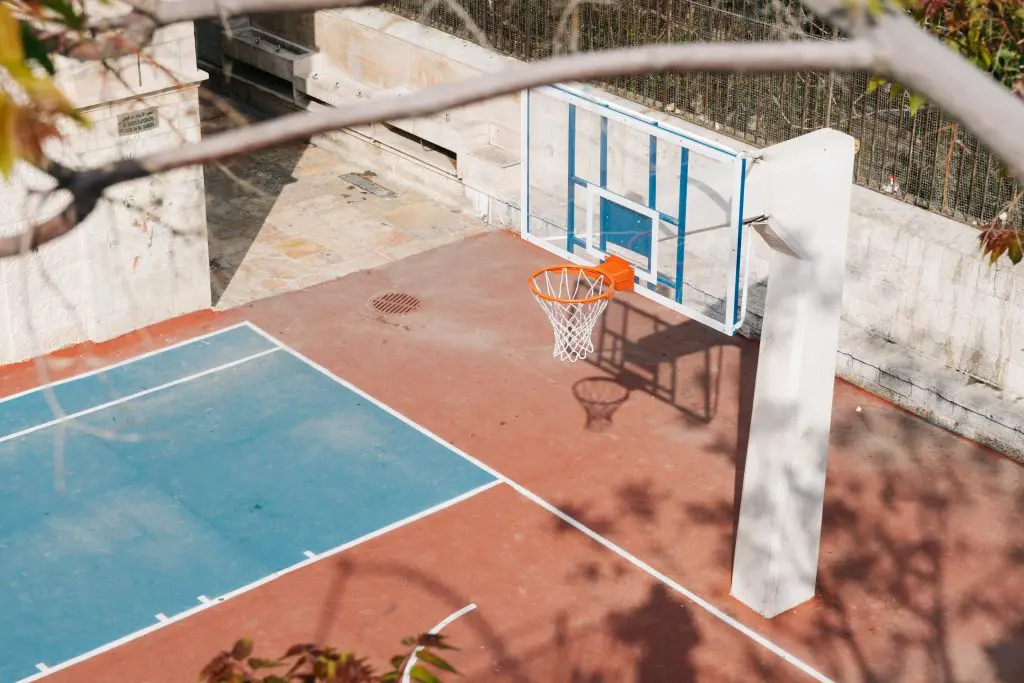Can You Play Basketball on a Concrete Surface?
For many basketball players, the love of the game often transcends the realistic nature of play. Although we know that certain playing conditions may not be best suited for a game, we still insist on playing a quick pick-up game. However, playing in less-than-ideal conditions can not only affect your playing game but can also have long-term affects to your health.
And one such less-than-ideal condition is, in fact, the concrete court. While may courts worldwide are made from a concrete material, you should educate yourself as to whether or not you can, or should, play basketball on a concrete surface.
Below, we are going to look at whether or not you can play basketball on a concrete surface, give you some tips and tricks to make playing on a concrete surface safer, and provide you with some alternatives to playing on a concrete court.
Should You Play Basketball on a Concrete Surface?
When it comes to whether or not you should play basketball on a concrete surface, the answer is a bit complicated. While you most certainly can play on a concrete surface, we wouldn’t recommend playing on a concrete surface too often.
While playing on a concrete surface can provide a nice bounce to the basketball, it can also be potentially dangerous. Both concrete and asphalt are ill-suited for the back-and-forth running, pivoting, jumping, and explosiveness that is required in a game of basketball.
However, many outdoor basketball courts are still constructed with either a concrete or asphalt material. That is why we recommend limiting the number of games you play on those courts.
While it is nearly impossible to completely avoid those courts, limiting your total playtime and the number of times you head out to an outdoor court can stave off potential injury and duress. In addition, limiting total playtime on those courts will also help to keep your knees from injury due to the wear-and-tear of the hard surface.

Why is Concrete Bad for Basketball?
Admittedly, concrete is not the absolute worst surface for basketball. However, as basketball was originally envisioned to be played on a hardwood floor, concrete still remains one of the more ill-suited surfaces. This is due to the hard, unforgiving material from which concrete is formed.
Concrete is, obviously, a hard surface. It provides little give for falls and can potentially cause bruising, scraping, and injury, particularly for falls. In addition, falling on a concrete surface could potentially lead to a concussion, especially if you take a fall after a high jump.
Similarly, concrete surfaces can wear-out a player’s knees. Due to the hard surface material, you will be placing significant impact on your knees as you run, jump, pivot, and box-out during a game. While an injury may not occur immediately after a game, repeated stress on the knees can cause long-term issues, problems, and injury.
In addition, consideration should be made for both the basketball and the basketball shoes you wear while playing. While you should always wear proper basketball shoes, avoiding the likes of Yeezy’s for basketball, both the basketball and your basketball shoes can suffer from playing on a concrete surface.
Due to the limited give from the surface, you are more likely to tear, rip, and separate your basketball shoes on a concrete surface. Similarly, while many outdoor basketballs are designed with outdoor play in mind, including in the rain, prolonged play and use on a concrete surface can lead to tears, holes, and rips in the ball.

How to Protect Yourself While Playing on a Concrete Surface?
While avoiding play on a concrete surface can be nearly impossible, there are some steps you can take to protect yourself. Firstly, never extend yourself or your body past your limits. If you feel injured, fatigued, or a tweak in your knees, then rest before continuing play.
While many injuries can occur playing on a concrete court, even more can occur due to players not resting and relaxing between games and after a particularly hard fall or sprain.
Secondly, remember it’s just a game. Your health and safety are more important. That means that while you should give it your all on the court, don’t overextend yourself. Avoid diving for the ball, making pivots between offense and defense without fully stopping, and jumping for loose balls and high rebounds.
Lastly, consider utilizing a basketball specific knee brace. Knee braces are a great way to provide support and stable pressure on your knees to avoid injury. Many knee braces come as a one-size fits all, meaning you can purchase nearly any available near you or online.
We personally use the Powerlix Knee Brace, which can be found on Amazon. It’s relatively inexpensive, fits well for our needs, and has gone through multiple games and practices with us with no problems. The Powerlix Knee Brace is also very comfortable, and we’ve never had any issues with it while wearing one.
Lastly, consider wearing basketball knee pads. Long gone are the days of poorly designed knee pads. Nowadays, knee pads come in a variety of fashionable designs and offer protection for your knees from scrapes and falls. The cushioned pad above the knee will ensure that you don’t scrape yourself and in our honest opinion, we think they look kinda cool.
Alternatives to Playing on a Concrete Surface
While playing basketball on a concrete surface is nearly impossible, particularly for us non-professional players, there are a few alternatives to playing on a concrete surface. Mainly, you should look to join a local gym which has a basketball court.
These basketball courts, while being indoors, are made from hardwood material, which is a much better material on your knees. In addition, the hardwood floor will counteract any nasty falls that may occur. In addition to being easier on your knees, these courts are less likely to affect your basketball shoes or the basketball itself.
